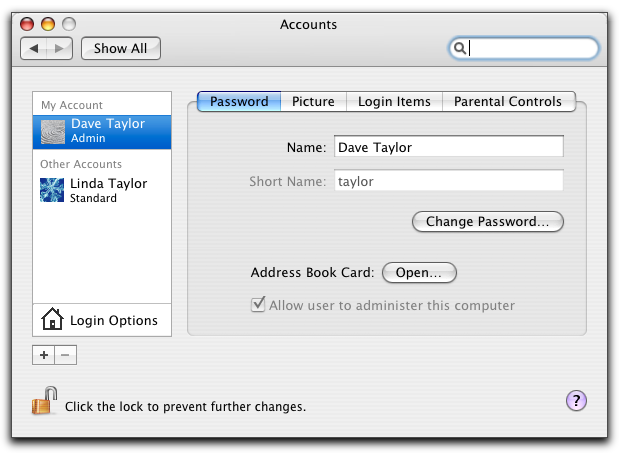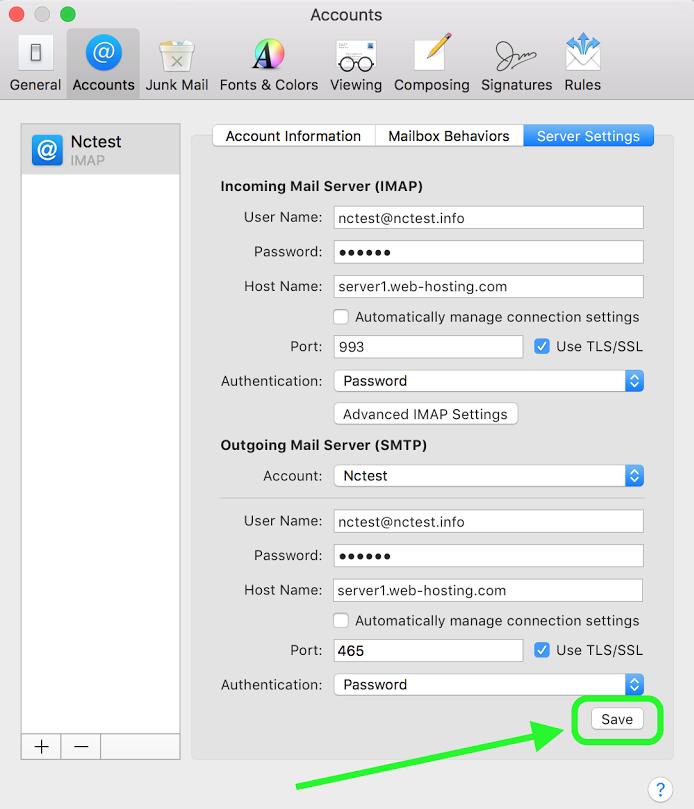
- MACOS SERVER ACCOUNT HOW TO
- MACOS SERVER ACCOUNT FOR MAC OS X
- MACOS SERVER ACCOUNT PORTABLE
- MACOS SERVER ACCOUNT PLUS
- MACOS SERVER ACCOUNT WINDOWS
You also have lots of compelling benefits: Built in RAID redundancy, ability to grow live volumes, multiple NICs, redundant power supplies, automatic versioning and snapshots, etc. Pretty slick and easier to manage than MacOS server IMHO. Or.for some $ up front, but no monthly costs, something like a Synology NAS and run your own cloud server to sync user data. Something like Dropbox or Box or OneDrive would be the most robust and easiest to setup, but if you are talking about alot of data, the cost may be prohibitive. More reliable, more flexible, and available everywhere for mobile users, including other platforms and mobile. Reasonable account creation and management WITHOUT syncing user data.įor data, consider a syncing tool or service. It give you the ability to set/reset passwords, and accounts are automatically created when a user logs in on each work station. That's important as who knows what Apple will do with Server moving forward.
MACOS SERVER ACCOUNT WINDOWS
Could be MacOS, could be Windows Active Directory, could be another LDAP server.so you don't need a MacOS server for this. Mobile user accounts, which is just log in credentials being set a server. If I were in your shoes, I would consider: When the server is down or unavailable, nobody can log in or access ANYTHING. Network accounts: No syncing.always working on the server, so no substantial log in/log out delay. Too much data, and log in syncs are painfully long. Mobile accounts with syncing: Sync data on log in and log out (typically). OP: Even when it worked fairly well, it was a bit fiddly and a longish learning curve, and challenging to troubleshoot. But as users saved data, our log in times got to be really, really long. It was pretty solid, once setup.when accounts were fresh and clean, with little data getting pushed. Used to use it in a classroom setting on 10.10, and 10.11. I might not agree with the fabulous part.maybe adequately? Or a decent compromise?
MACOS SERVER ACCOUNT HOW TO
I also found a couple of threads on topic, but nothing modern:ĭoes anyone have any pointers to modern documentation on how to properly setup such a magical network home folder? Thanks so much.
MACOS SERVER ACCOUNT FOR MAC OS X
The "latest" manual I found was for mac os x server user management 10.6: I'm trying to find a modern manual on this. I'm tying to find the "right" way to set up these network home folders. That way anything I do on my laptop will get updated to the desktop and vice versa. I got a mac mini and I want to set up a network home folder that I can use on my laptop/desktop. You just log in, and your world comes to that new machine. You set up this one home account, and any time you get a new computer, zero set up. It will in a sense "drop box" sync down all your network home folder stuff down to that client mac and you can work on your stuff locally, and any changes get sync'd back to the server.įurther magic, if you VNC into your home network, you can basically have any machine in the world be a client to your home folder and have local access to your data from where you are.

Then, when you walk up to any machine on your home network, you can log in to that account and the mac you use to login will get access to that network account. In it you have all your documents, fonts, apps, etc. What I'm trying to set up: If I understand it, os x server lets you set up a network home folder.
MACOS SERVER ACCOUNT PORTABLE
Apple seems to have called them 30 different names including: mobile account, network account, mobile users, portable home directories, share point, network home folder, network users, and probably a few more. I no longer have to worry about space since I can plan well ahead for that.Does anyone have any pointers for how to properly setup network home folders in mac os x server 10.14?įirst, sorry, i'm not even sure what to call these network home folders. Still, I have over 2TB of media reasonably secure and all Macs are backed up via TM. Cons are that the initial investment was high and that having my iTunes library on the Drobo means I can't do a time machine backup on that. Pros were that I could grow the storage space as drives got cheaper, recycle old drives, have a safety net if drives fail and also use as a Time Machine backup.

Then as the library got bigger, it was getting hard to store the media on an external drive and also back up. The rMBP should last a good few years and is definitely an improvement over the mini.įor storage space, I moved away from internal drives with the mini. Now I use a first gen rMBP (2012) that was retired when I got my touch bar MBP. The host mac has evolved from a G4 tower bought in the late 90s to a 2009 Mac mini.
MACOS SERVER ACCOUNT PLUS
Initially just music, ripping all my CDs plus some vinyl. I have had a media server in several forms since iTunes first came into being.


 0 kommentar(er)
0 kommentar(er)
